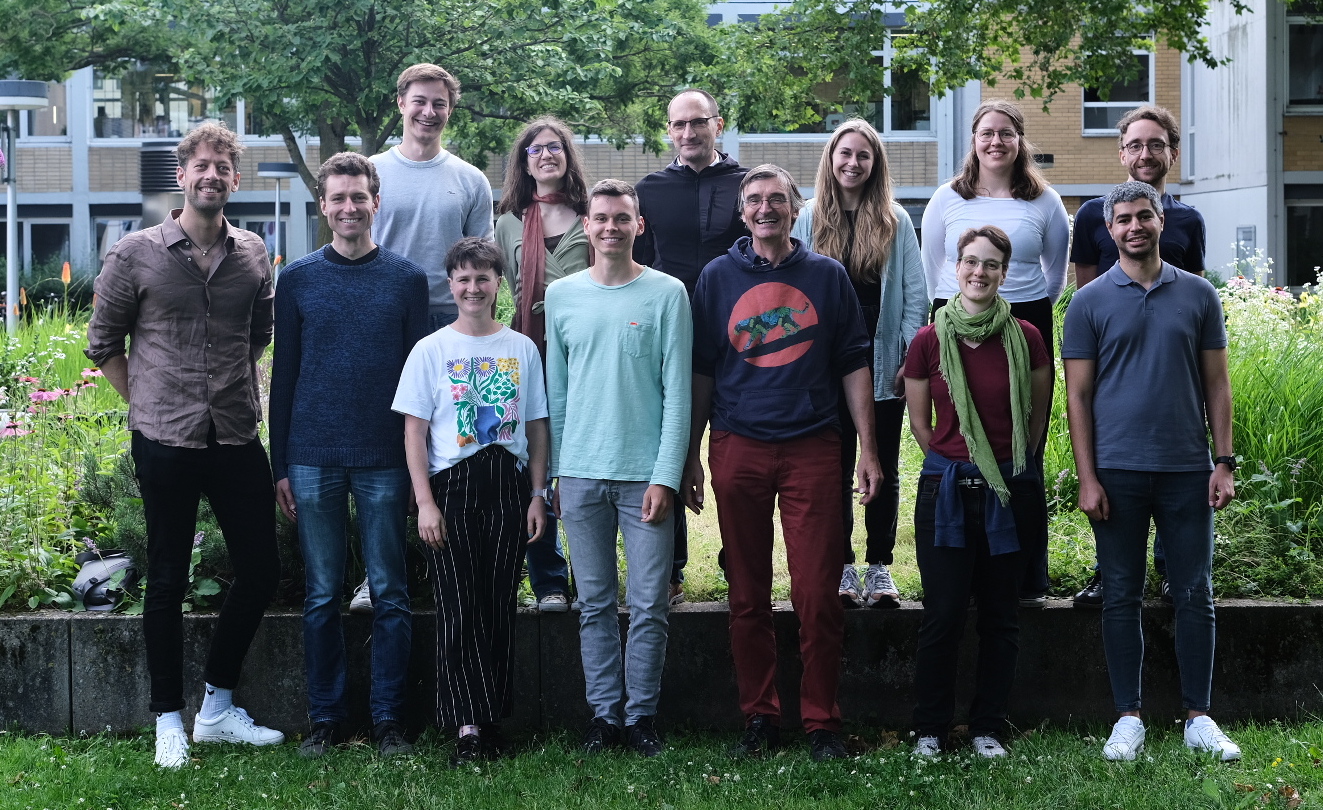
From left to right: Georg Diez, Felix Guischard, Fabian Rudolf, Miriam Jäger, Camilla Sordi, Fabian Rohrbach, Steffen Wolf, Gerhard Stock, Sofia Sartore, Katharina Pessel, Nele Dethloff, Ahmed Ali and Emanuel Dorbath
Understanding elementary life processes from first principles.

From left to right: Georg Diez, Felix Guischard, Fabian Rudolf, Miriam Jäger, Camilla Sordi, Fabian Rohrbach, Steffen Wolf, Gerhard Stock, Sofia Sartore, Katharina Pessel, Nele Dethloff, Ahmed Ali and Emanuel Dorbath
Our Research